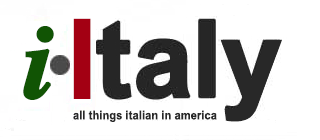On March 21, Montclair State University hosted a meeting with NJ/NY-based Italian companies entitled Synergies Between Business and Education. Sponsored by the Inserra Chair in Italian and Italian American Studies, the event was co-organized with the Department of Spanish and Italian and the Feliciano Center for Entrepreneurship under the patronage of the Italian Trade Commission and in collaboration with Choose New Jersey. In her greeting, Inserra Chair Teresa Fiore jokingly said that planning the afternoon itself was a synergy: “Just organizing this meeting has been an incredible pleasure because we are sharing information, ideas, data, and we feel that this can be a very good start.”
The meeting was aimed at fostering synergies between Italian companies in the New Jersey and New York areas and the Italian Program at Montclair, as well as other related disciplines, in order to create opportunities for students in the rich Italian economy of the area. Following this discussion was another one of equal importance on food and sustainability, featuring Andrea Illy, Chairman of illycaffé and Altagamma, in conversation with scholar and journalist Daniele Balicco.
Expanding the Bridge Between Italian and Business
Fiore expressed that the Italian Program at Montclair has been particularly lucky in their “efforts in looking for innovative ways of bringing students to the study of the Italian language and making them into professionals.” However, she still believes that the bridge between the US and Italy can be expanded and this evening was one step in the right direction. After her introduction, she handed the floor over to two representatives of MSU: Keith Barrack (Chief of Staff, Office of the President) and Robert Friedman (Dean, College of Humanities and Social Sciences).
Barrack vowed his assistance in her endeavor saying, “We want to be part of your success.” In addressing the companies present at the meeting, he promised, “The University will help you with the environment-sensitive projects, with the packaging, with the design, with business and public infrastructure.” Friedman then thanked the Inserra Chair and the Italian Program's faculty members for their work and their re-visioning of what Italian Studies can be. He also explained that he is co-leading the plan of combining Italian Studies and business in tangible ways through a shared B.A. in partnership with the Feliciano School of Business. He concluded, “Our hope is that we will be able to produce for you your next workforce. And we are very interested in having any opportunity to bring more students to your business system."
Margie Piliere (Chief Economic Development Office, Choose New Jersey) is one of many business professionals that shares the same goal as the Inserra Chair and the Italian Program. “Choose NJ is a privately founded non-profit and we are focused very much on attracting new business to the state of NJ and we do this both domestically and internationally. We have been spending quite a bit of time on encouraging businesses from Italy to move here to NJ.” Fiore commented that educating students about Choose NJ and the other companies in attendance would be one of the first steps to take. She explained, “We are developing these new BA in Italian and Business. It’s a bit of a tabula rasa, so we can definitely come up with new ideas that certainly serve the needs of the companies that are here, and possibly launch new research projects.”
“La Bella Lingua” as a Useful Tool in Business
The message at the core of the conversation was that Italian is not just “la bella lingua” but also a useful language. MSU faculty members are advocates of this idea, including Enza Antenos (Deputy Chair, Italian), who teaches a business Italian course with the premise of “why study Italian in the current market.” The program “allows students to see what they can do with the language.” She continued, “It gives immediacy of delivery mode and wide online dissemination. Students publish articles through publishers in New York and within a month the articles had over 40,000 views. The business course has an impact beyond the university.” In Fall 2018, when the proposed joint Italian/Business BA is to commence, there will be an international experience, which could be local in an international company or alternatively an experience abroad. Choose NJ will be an important partner of the Italian Program in this direction.
Fiore explained that translation is also an important aspect, not just in terms of literature but also in the business world. She said, “Italian is a hot language for business translation and for a very simple reason: our country continues to be quite monolingual. And you need to know Italian to know Italy.” Marisa Trubiano (Associate Professor, Italian), who has supervised a large number of surtitling and subtitling projects involving students in the past couple of years, illustrated how MSU teaches translation as an important tool. “Our translation projects within the context of the courses, of special projects, and internships basically render Italian cultural products accessible to a global English-speaking or non-Italian speaking public.” For example, the students who work on projects with partners of their choosing—like Piccolo Teatro di Milano, Sferisterio di Macerata, Arena di Verona, and Maggio Musicale Fiorentino with the support of the Inserra Chair, Prescott Studio, and the Ministry of Foreign Affairs—learn a new skill set “that gives them access to a new world both culturally and professionally speaking.”
MSU Internship Experiences with Italian Companies
Maurizio Forte (ITA NY, Director) was one of the many important participants and began by describing the agency's main goal. “At the Italian Trade Commission our mission is to support Italian companies in the process of going international. More exports, investments, and also foreign investments in Italy, these are becoming more and more important to be part of the global world.” He then announced that he would like to arrange an internship program with MSU students at the Italian Trade Commission, as part of an agreement with other local universities. As he explained, this would be “a nice window onto the many things that Italy is doing in our area.”
Vincenzo Ciancio (Monte dei Paschi di Siena, Vice President) offered only the kindest words for his experience with MSU interns. “We found it to be an incredible opportunity and we are amazed at how they’ve been able to actually fit into our organization, a lot of that comes from the fact that is cultural.” This is where Italian comes in to play. “We like speaking in Italian. We like being able to converse with many of our customers that actually want that, that still need that.” He then enthusiastically shared that he would love any MSU student to work with them and encouraged other companies to do the same. Fiore added, “We know that with Monte dei Paschi di Siena there could not be a better dialogue, thanks to the successful shared supervision between their managers and MSU faculty members such as in this case, Enza Antenos. It’s very constructive and results in very concrete offers."
Likewise, Giovanni Colavita (Colavita USA) expressed optimistic sentiments about internships. He began by explaining that he gives his ten summer interns from Italian universities job rotation opportunities despite their field of study in order to give them a feel of the company. “I don’t care that much what you teach them in terms of business. I care more about the culture, the language, because if they are smart people I will find them or create a job.” He concluded, “Internships have been a huge opportunity for the students and the company. We have an Italian company and American company, and we need the two to talk and to be closer. So we send Americans to Italy and Italians to America.”
Lastly, Lidia Autuori (Safilo, HR Vice President) practices similar internship strategies. “We relate very much and connect with Giovanni Colavita’s thoughts. At Safilo to promote the problem-solving attitude we have established that we don’t have job descriptions, but we have role profiles.” She finished, “We strongly believe in Italians, and we have Italian people here in the US, but we also have American people in the top management in Italy.”
The Inserra Chair and the Italian Program at Montclair University are successfully creating opportunities for their students and proving that pursing Italian studies is an effective tool for entering the "real world." This meeting alone saw the continuation and creation of several internships at reputable companies, including Choose New Jersey, the Italian Trade Commission, and Monte dei Paschi di Siena. This event is just one of many initiatives aimed at linking Italian studies with businesses and is a microcosm in the universal push for Italian culture and language as engines for success in terms of both finding jobs and advancing careers.







































